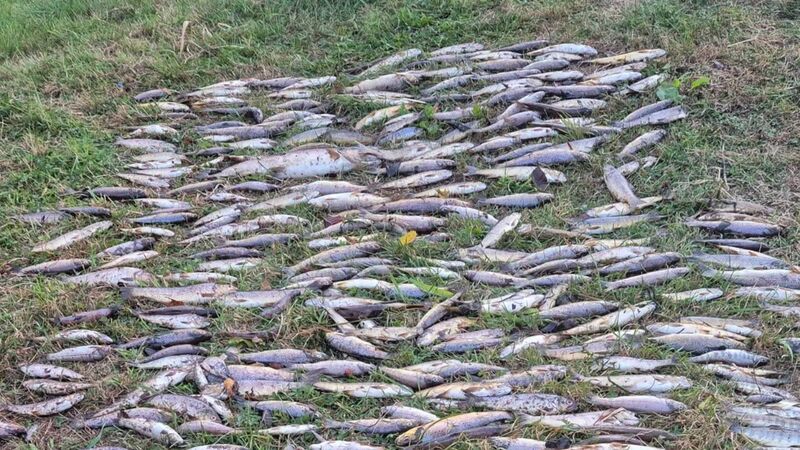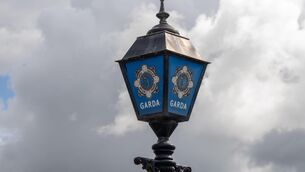Up to 46,000 fish dead in North Cork rivers as anglers call it an ‘ecological disaster’

The chairperson of Killavullen Angling Club, Conor Arnold, said members were told not to take any more fish out of the River Blackwater until the EPA had conducted its tests. Picture: Conor Arnold/Facebook
Fishing bodies have claimed up to 46,000 fish have now died in a fish kill in North Cork, which has been branded an “ecological disaster”.
While Inland Fisheries Ireland has not put the death toll that high, it has confirmed that between 8,000 and 10,000 fish — mainly brown trout — have died in the Blackwater, Clyda, and Awbeg rivers, as angling clubs and fishery operators await test results to determine the cause of the fish kill.
Local angling clubs in Mallow, Lombardstown, and Killavullen came together to carry out an estimation of how many fish have been lost in the kill in the River Blackwater and its tributaries since August 12. They estimate that up to 46,000 fish may have been killed. It occurred over a 30km stretch of the river from Roskeen Bridge in Lombardstown to Killavullen Bridge, according to the clubs.
Fishery operators in the area have had to close their operations, impacting angling tourists from Britain and mainland Europe.
Samples have been taken from the River Blackwater by the Environmental Protection Agency (EPA) and the Marine Institute, while the incident is also being investigated by Inland Fisheries Ireland.
John Murphy, the spokesman for Salmon Watch Ireland, said the conservation body is “alarmed at the scale and extent of the recent fish kill on the River Blackwater”.
He added: “We await the outcome of tests being carried out by the relevant State agencies, and call for full clarity on the causes of this ecological disaster."
Members of local angling clubs have been discovering dead fish from the river since last week.
“We were advised on Friday morning not to take any more fish out of the river until the EPA tests came back, and they established what was the cause of it and if there was something toxic in the water,” said fishery operator and the chairman of Killavullen Angling Club, Conor Arnold.
He believes not many live fish are now left in the 30km stretch, but added that some fish which left the main river to head into local tributaries are now dying.
He said locals had expected results from the water testing last Friday from the EPA, but have been told that tests undertaken by the Marine Institute last Friday could take up to three weeks before the results are known.
A statement from Inland Fisheries Ireland (IFI) said: “Present indications suggest there are now between 8,000 and 10,000 wild fish mortalities — mainly brown trout — recorded over an 18km stretch of river. This is based on IFI observations and data submitted by local stakeholders.”
It said there is no evidence of “a polluting or harmful discharge” being detected, and said: “Disease outbreaks can occur in wild fish populations and are influenced by numerous factors, including environmental change.”
In a statement to the the Environmental Protection Agency said: “The EPA inspected EPA-licensed industrial sites and urban wastewater discharges in the area on that same day.
"While the investigation is ongoing, preliminary sample results indicate no causal link between the fisk kill and discharges from EPA-licensed sites. The preliminary results from river water samples taken by EPA and Cork County Council indicate normal water quality in the area.
"EPA continues to liaise with Inland Fisheries Ireland, who are investigating the cause of death of the fish, and Cork County Council accordingly.”
















